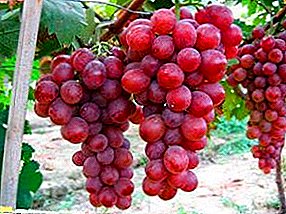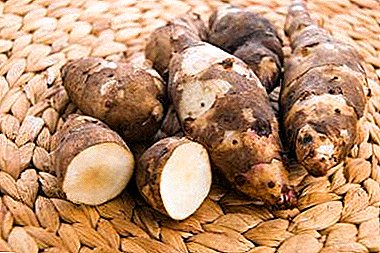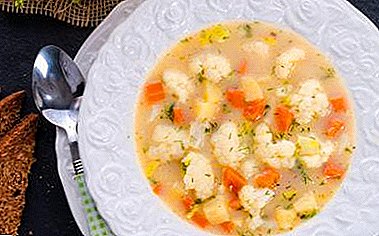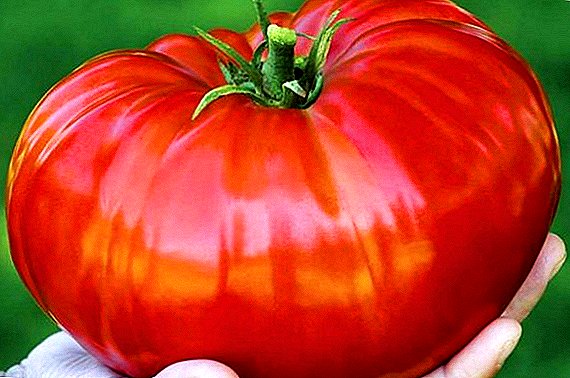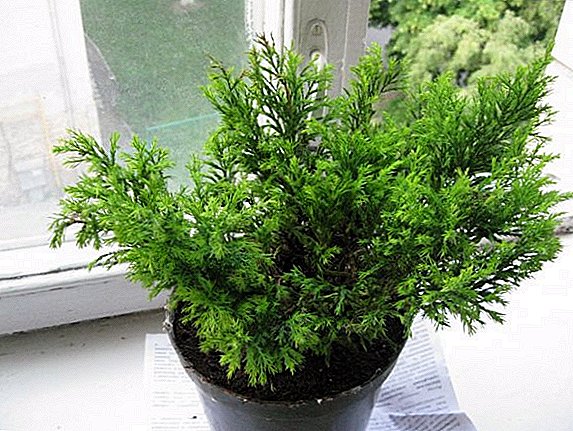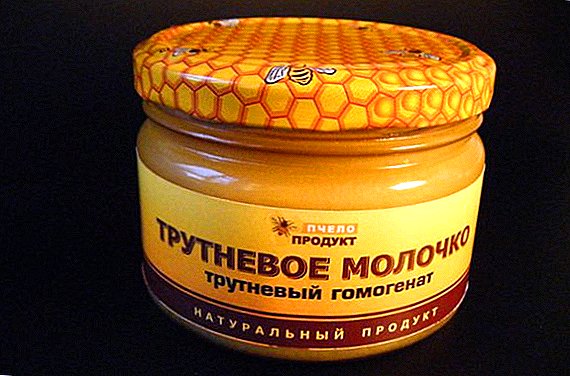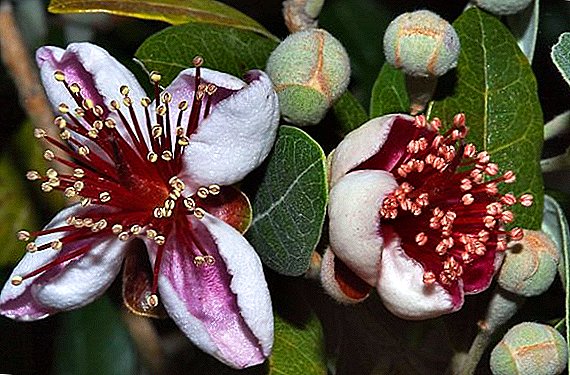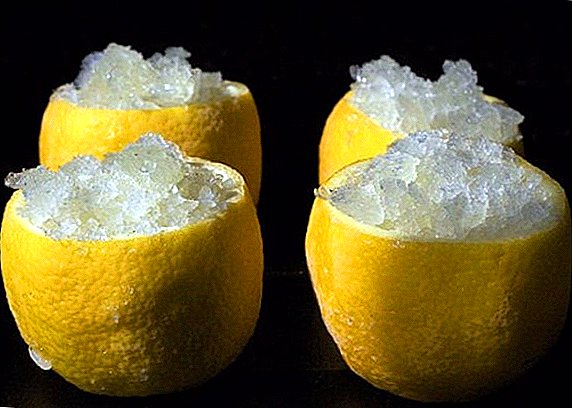 Lemons - trees are heat-loving and practically do not grow in our area. Basically, the fruits of these citrus fruits fall on store shelves from southern countries, they do not belong to seasonal fruits, and you can buy them at any time of the year. It is unlikely that from this point of view it makes sense to make blanks from lemons. But if you have such a quantity of fruits at your disposal, that in the coming days you will not be able to use everything for sure, there is a good way to save the product - to freeze it.
Lemons - trees are heat-loving and practically do not grow in our area. Basically, the fruits of these citrus fruits fall on store shelves from southern countries, they do not belong to seasonal fruits, and you can buy them at any time of the year. It is unlikely that from this point of view it makes sense to make blanks from lemons. But if you have such a quantity of fruits at your disposal, that in the coming days you will not be able to use everything for sure, there is a good way to save the product - to freeze it.
Are useful properties preserved when frozen?
Frost - perhaps the most rewarding way to preserve vegetables and fruits. First, it is faster and easier than any other blank. Secondly, with the observance of technology, in the frozen product the main part of everything useful that is present in the fresh is preserved.
Did you know? In warm countries, where there is no frost, lemon trees do not hibernate, like garden perennials that are usual for us, and their fruiting is permanent, without interrupting at all. As a result, from one such tree during the year sometimes they collect up to six hundred selected fruits!
Of course, frozen and fresh foods are not the same in terms of nutritional value. In addition to the fact that the texture and aroma of fruits and vegetables are greatly affected by such processing, a certain part of the vitamins are also destroyed. In particular, ascorbic acid, because of which we usually appreciate lemon, is usually lost at low temperatures. But in fact, the notorious vitamin C is a very capricious thing in general, its amount decreases sharply even if the cut lemon is left for some time in an illuminated place, not to mention the heat treatment that destroys this beneficial substance almost entirely.  However, lemon is actually useful not only because of ascorbic acid. In addition to her and other vitamins, in the sour fruit there is also a huge amount of trace elements necessary for our body, in particular: potassium, phosphorus, calcium, magnesium, sodium, sulfur. So, they do not suffer from frost at all. The same applies to bioflavonoids (in lemon, in particular, citronin, eridictiol, hesperidin, diosmin, rhamnoside) and vitamin B9 (folic acid) are present: these substances are lost during heat treatment, and at low temperatures they practically do not suffer.
However, lemon is actually useful not only because of ascorbic acid. In addition to her and other vitamins, in the sour fruit there is also a huge amount of trace elements necessary for our body, in particular: potassium, phosphorus, calcium, magnesium, sodium, sulfur. So, they do not suffer from frost at all. The same applies to bioflavonoids (in lemon, in particular, citronin, eridictiol, hesperidin, diosmin, rhamnoside) and vitamin B9 (folic acid) are present: these substances are lost during heat treatment, and at low temperatures they practically do not suffer.
Speaking about the benefits of frozen products, you need to clearly understand what kind of technology we have in mind. The industry uses instant deep (it is also called "shock") freezing, which suggests that the product just taken from the bed (ideally) is placed in a very chilled place. The temperature of shock freezing is up to -40 ° C. With this cooling, of course, you can save most of the nutrients for quite a long time. Unfortunately, this effect cannot be achieved in a home refrigerator, which is why vegetables and fruits can be stored in a conventional freezer for a relatively short time — just a few months. 
Important! When squeezing the juice from lemon, especially with the use of metal devices, vitamins are lost five to ten times more than when frozen!
Of course, it is better to eat fresh lemons than frozen ones. And yet, again, this method of preparation allows you to save the maximum health benefits in the product, compared to any other. There was absolutely no harm from such fruits, if only they were initially of high quality, were stored no longer than the time allowed and were not frozen again after defrosting.
Citrus preparation
So, first of all, you should choose the right lemon for freezing.
Of course, only fully ripe fruits are suitable for these purposes (you need to understand that you can often find unripe lemons on sale, they are removed from the tree ahead of time for better transportability, and if you buy a product for long-term storage in a conventional refrigerator compartment, preference is just better to give a little unripe, they lie down longer). 
However, the other extreme should be avoided - the over-ripe fruit also does not suit us, because it has already lost some of its beneficial properties and taste, so that after freezing there is little left of them. Everything is simple here: lightly press on the citrus and if it is soft, put it in place and look for a better product. A good lemon should be elastic and even slightly springy.
Did you know? It is impossible to determine the degree of ripeness of a lemon by the color of the peel, these citrus fruits turn yellow before full ripeness occurs. There is a clear indication that yellow lemon is not really "green": its skin gets shine, while in unripe it is matte.
Carefully inspect the skin of citrus. It should not have any damage, wormholes and, especially, brown spots (the latter indicate that the fruit is frost-bitten, this is in any case a bad signal, and for our purposes it is a disaster). By the way, when you cut a lemon into slices and see that its flesh literally falls out of the membranes, you can be sure that the fruit was stored at a lower temperature. It is better to eat them quickly, they are not suitable for freezing.
The lemons selected for freezing should be very thoroughly washed under warm running water using a stiff brush, since we will harvest them together with the peel, it contains the greatest amount of useful substances. 
Freezing is a fast, convenient and most optimal way to harvest vegetables, fruits, berries and greens. Therefore, we advise you to learn about how to freeze: tomatoes, cucumbers, carrots, eggplants, zucchini, green peas, pumpkin, apples, blueberries and greens.
In order for the fruit to have a marketable appearance and to be better kept, growers and sellers often rub their rind with wax. This product, in general, is not poisonous, but there is no benefit from it, so before preparing this film you need to get rid of it. To this end, you can fold the fruit into a colander and rinse with boiling water, then carefully brush it. More labor-intensive, but allowing to save more useful substances the method involves the use of a spray. We make a weak solution of vinegar, citric acid or lemon juice, carefully treat the lemons with a spray bottle, leave for some time for the acid to dissolve the wax, and then thoroughly wash it with a brush.  However, since the wax provides some protection, it should be removed immediately before using the fruit. If you are not going to engage in harvesting today - leave the lemons in the form in which they were sold.
However, since the wax provides some protection, it should be removed immediately before using the fruit. If you are not going to engage in harvesting today - leave the lemons in the form in which they were sold.
Important! Thick-skinned lemons are considered more useful, because under such a reliable protective layer all useful substances are better preserved. Thin-skinned lemons are easy to recognize: they are usually smooth, while the thick-skinned ones have a bumpy surface.
After the lemons are cleaned, they should be allowed to dry completely and only then proceed to freeze.
Ways of freezing: step-by-step instruction
There are several ways to harvest and store lemon at low temperatures. It is not necessary to dwell on any one. Depending on how you intend to use the product in the future - for tea, as a filling for pies, powder, additives in sauces or meat dishes - you can freeze slices, zest, whole grated lemon or squeezed juice.
Slices
The washed and dried lemons are cut into circles, if desired, each cut into two parts. Peel the skin is not necessary! Place the slices on a flat plate so that they do not touch each other. We put the plate in the freezer (if there is a deep freeze mode in your refrigerator, turn it on in advance, for a couple of hours, so that the chamber will cool to the maximum). After a day, we take out a plate, transfer frozen slices to freezer bags, plastic or glass containers, tightly close and return to the freezer for long-term storage. It is very important to comply with the specified "two-tier" technology, because if you immediately put the slices into a bag without prior freezing, they stick together in one room, and using them in the right quantity will be almost impossible. The proposed method, on the contrary, makes it possible in the future to extract each lobule separately from the freeze - for example, in order to put it in a cup of tea. 
Zest
You can freeze the lemon "parts", zest and juice separately.
Important! Zest is the yellow part of the lemon peel, not the whole skin. White loose "pillow" between the skin and pulp in cooking is not used by itself.
To freeze zest, we act according to the following algorithm:
- We take a washed and dried lemon in one hand, a regular grater or a special “gadget” to remove the zest (very comfortable knives for this purpose are on sale) in the other hand and carefully remove the top shiny skin, trying not to touch the white part of the skin.
- Grated zest is placed in a glass or plastic container (preferably portioned so that it can be used at one time) and sent to the freezer.

Lemon juice
The technology of freezing lemon juice is elementary:
- Squeeze out the juice.
- We pour juice into special ice molds, they are in any modern refrigerator (you can, of course, prick lemon ice with a knife, as the heroine of the film Basic Instinct, which liked sharp edges, but here is a matter of taste).
- In order not to occupy molds, shift the ready pieces of ice into glass or plastic containers and leave them in the freezer.
And in order to squeeze the juice better, you need to freeze the lemon first. Previously, we have already mentioned that in this case, the pulp of the internal films lags behind by itself, that’s what we need. Some recommend to warm the lemon, pour it with boiling water or even hold it in the microwave, but in this case we destroy a huge amount of nutrients, so it is hardly worth doing it. Enough for the lemon to cool to room temperature after cooling.  However, the whole trick is how to squeeze the juice out of the lemon. As a rule, ordinary juicers are not suitable for citrus fruits, and vice versa - using an oranges device you will not squeeze out the juice from an apple. But the problem is not only that.
However, the whole trick is how to squeeze the juice out of the lemon. As a rule, ordinary juicers are not suitable for citrus fruits, and vice versa - using an oranges device you will not squeeze out the juice from an apple. But the problem is not only that.
Important! Never use ready-made lemon juice from a store to freeze. With a natural product, he has little in common!
On the Web, you can find many master classes in extruding lemon juice without a juicer; for example, using a conventional plug. However, the trouble is that the huge amount of nutrients contained in lemon is very volatile. Upon contact with air, they quickly deteriorate, and contact with the metal is highly undesirable not only for the above-mentioned ascorbic acid, but also for minerals that begin to oxidize and lose their properties, transforming into new chemical compounds, at best, completely useless for our body.
Based on this, you need to squeeze lemon juice:
- as quickly as possible;
- without the use of metal objects.
There are various citrus juicers made without the use of metal. The simplest option is a plastic or glass construction for manual use (half a lemon is placed on a special rod, and as a result of rotational movements, juice is squeezed out). Unfortunately, it will not be possible to do this quickly, and the pulp with bones gets into the finished product, so then you have to filter it further. Today more sophisticated devices have appeared on the market, however, the most effective of them are expensive. In general, the method of squeezing the juice everyone can choose for himself, but it should be guided by the highest possible observance of the above two rules - the speed and minimum of the metal.
To keep the natural seasonal vitamins, many housewives make homemade preparations for the winter. We advise you to get acquainted with the best recipes for the winter: apples, cherries, strawberries, apricots, gooseberries, currants, yoshta, chokeberries, sea buckthorn and watermelon.
In addition to the freezing of the peel and juice, you can use another way:
- The washed and dried lemon should be put entirely in the freezer for a while (it is not necessary that the fruit turn into stone, it is enough that it “grabs” a little).
- Grate the frozen lemon, put the prepared mass in portions or containers, close tightly and send to the freezer again.
 This method, unfortunately, does not allow to avoid tight contact of the lemon with the metal, but the workpiece occurs as quickly as possible, which is not possible when squeezing out the juice.
This method, unfortunately, does not allow to avoid tight contact of the lemon with the metal, but the workpiece occurs as quickly as possible, which is not possible when squeezing out the juice.Did you know? Lemon came to Europe from India; it was brought by the soldiers of Alexander the Great, returning home from the famous march to the East. Subsequently, the lemon fruit for some time called the "Indian apple".
Application of frozen lemons
You can use frozen lemons in different ways, depending on how they were prepared.
Slices
Frozen lemon slices look a little less attractive than fresh ones, so it’s unlikely to decorate the festive cocktails with them. But as a flavoring tea and enriching it with a huge amount of useful substances will fit perfectly.
Lemon to fish is a classic of the genre. When baking fish in many recipes there is a lemon (for example, slices are laid in the belly of mackerel, laid out on top of salmon and trout, etc.). After defrosting, such slices can be added to fish in aspic dishes - this will make them tastier, more beautiful and healthier.
Lemon, grated with zest, is an excellent filling for various pies. It can also be added to the finished cake, putting it right between the cake between the cake layers and making a real lemongrass.  On the basis of such a slurry, original vitamin salad dressings are prepared; In addition, sourness does not prevent heavy meat dishes, pasta, soups and desserts.
On the basis of such a slurry, original vitamin salad dressings are prepared; In addition, sourness does not prevent heavy meat dishes, pasta, soups and desserts.
Important! If you want to lose a couple of extra pounds, make it a rule to start the day with a glass of non-carbonated water with a temperature slightly above room temperature, with a few lemon segments added to it. This citrus will help to remove toxins from the body and balance weight. To enhance the effect during the day, it is recommended to drink a few cups of unsweetened tea with lemon. Frozen stocks in this case will come at an opportune time!
Zest
Frozen zest is a good alternative to candied fruits, which are also prepared, including lemon peel. It can also be added to various cupcakes and other pastries.
First, there is no added sugar in it, which means that this product is more natural; secondly, it was not subjected to heat treatment, and therefore, retained all the useful substances. Of course, in the baking process, the last advantage is leveled, however, frozen peel can also be used cold. In particular, the same cakes and kulichik zest can simply be sprinkled at the stage of decorating and preparing for serving, in this case all the benefits of the zest will remain intact. Such a powder will perfectly complement the taste of jelly, cottage cheese, salad, porridge or vegetable side dish, as well as meat and fish, especially if you add it directly to the plate.
Frozen zest is also used in beverages, particularly cocktails, both alcoholic and non-alcoholic. For the smell, it can be added to jam and confiture - in fact, a light citrus note can enrich almost any dish. Interestingly, the use of lemon zest is not limited to cooking. It can also be used for completely non-food purposes, for example:
- to scare away annoying insects;
- to get rid of the unpleasant smell (say, fish) in the microwave or in the trash.
Rind can also be added to the foot or hand bath before doing a pedicure (manicure), in this case the skin softens much better, and besides, the nails will become much stronger. Rinsing the mouth with the addition of lemon peel allows you to get rid of the signs of periodontal disease.  In a word, lemon peel, including frozen peel, is an indispensable thing in the household!
In a word, lemon peel, including frozen peel, is an indispensable thing in the household!
Important! Lemon peel is a storehouse of bioflavonoids, which are natural antioxidants and are fully preserved during freezing. In addition, these substances, together with the special pectins contained in lemon peel, have antitumor activity and cause the death of atypical cells. According to the results of the research, cancer of the prostate, breast, colon, skin and lungs is much less likely to affect people who use lemons along with the peel.
Lemon juice
Классический вариант использования замороженного лимонного сока - добавление в коктейли или другие напитки вместо обычных кубиков льда. В этом случае, нагреваясь, напиток будет становиться только лучше, приобретая дополнительный вкус, в то время как обычный лед, превращаясь в воду, серьезно вредит качеству напитка.
Put lemon or lime ice in mojito instead of plain ice - and the familiar drink will acquire a special richness and additional charm. And if you want to kill your guests on the spot - make ice lemon crumb, killing pre-cooked cubes in a blender!  You can, of course, defrost the juice and use it in any recipes where this ingredient is present, but lemon cubes or lemon crumb is much more interesting.
You can, of course, defrost the juice and use it in any recipes where this ingredient is present, but lemon cubes or lemon crumb is much more interesting.
Summing up, it is worth saying that frozen lemon is certainly not as useful as fresh, but this variant of the preparation is definitely better than any other one associated with heat treatment. Certain loss of vitamins in this case occurs, however, almost all minerals and natural antioxidants (bioflavonoids) at low temperatures are fully preserved. And one more thing: freeze lemons together with zest, because it contains the main value of this amazing product, presented to us by nature!


